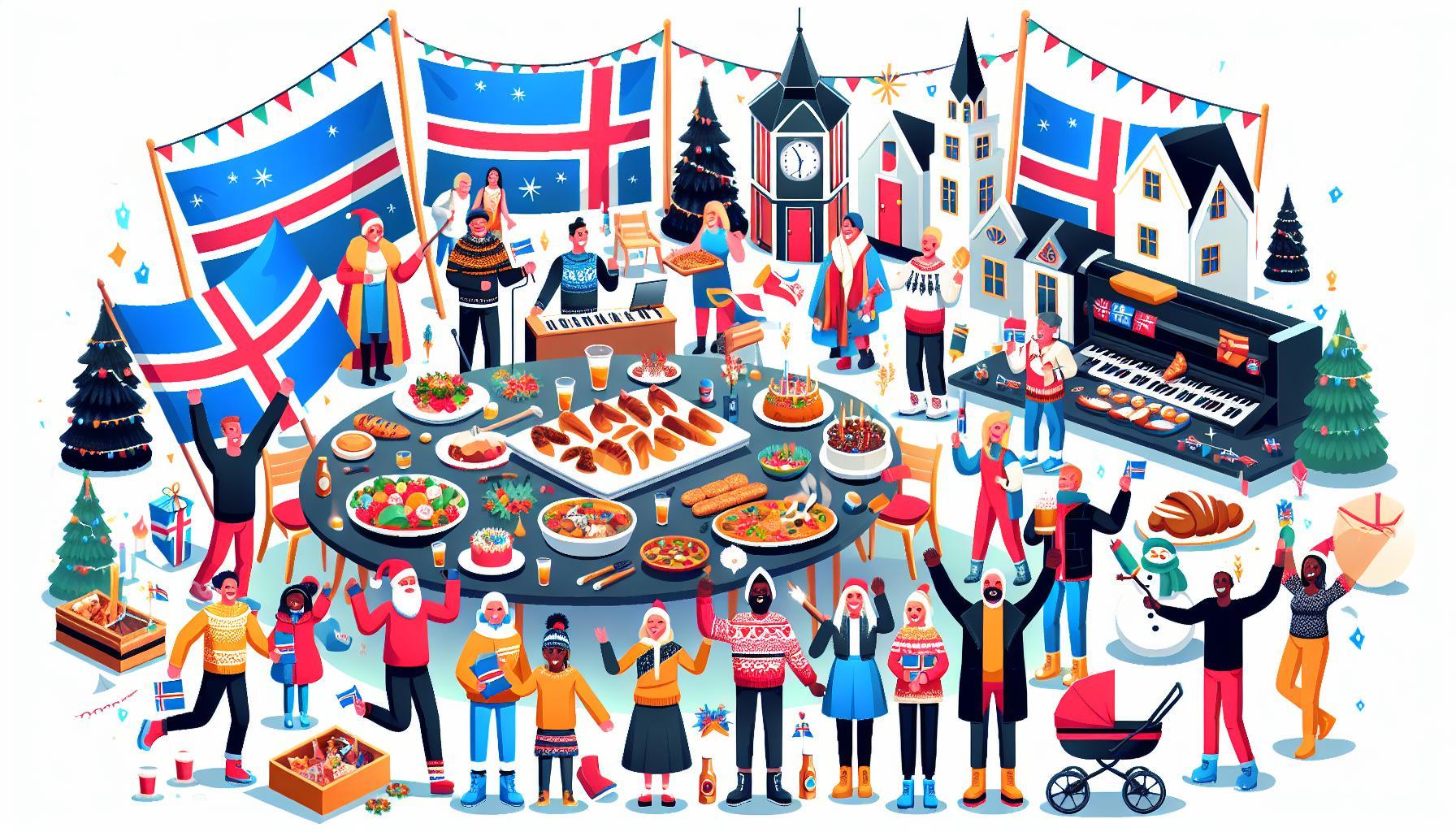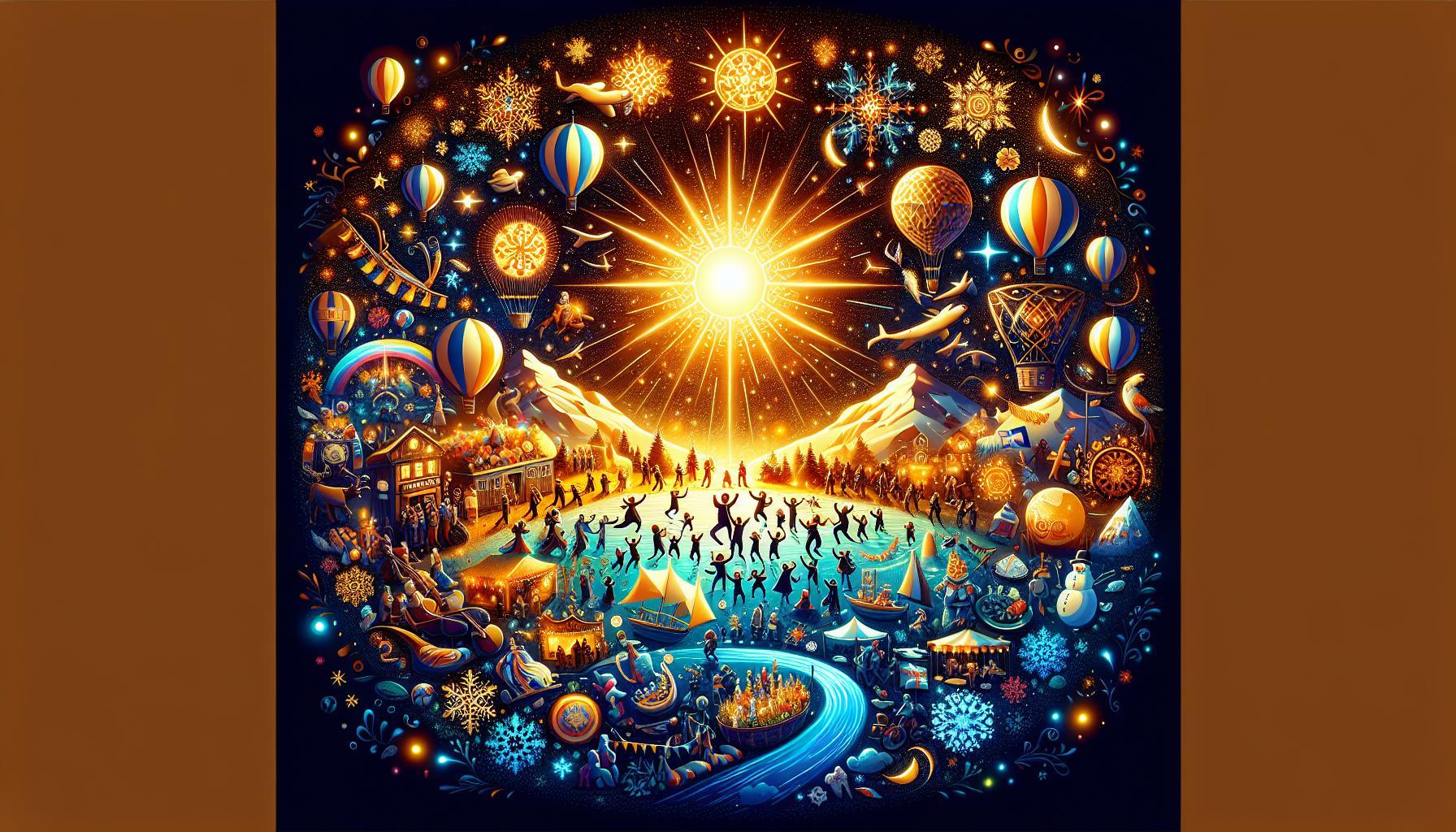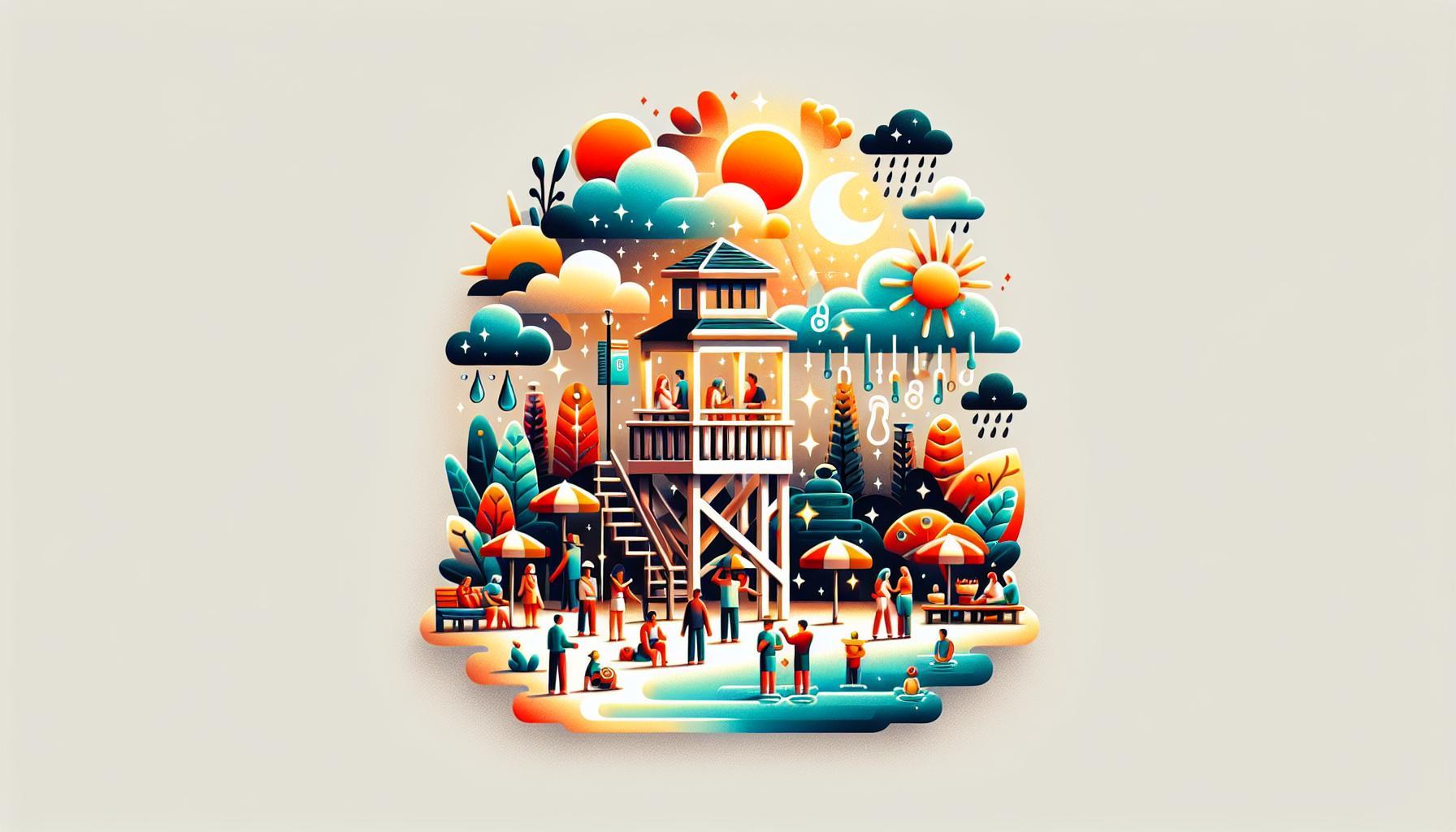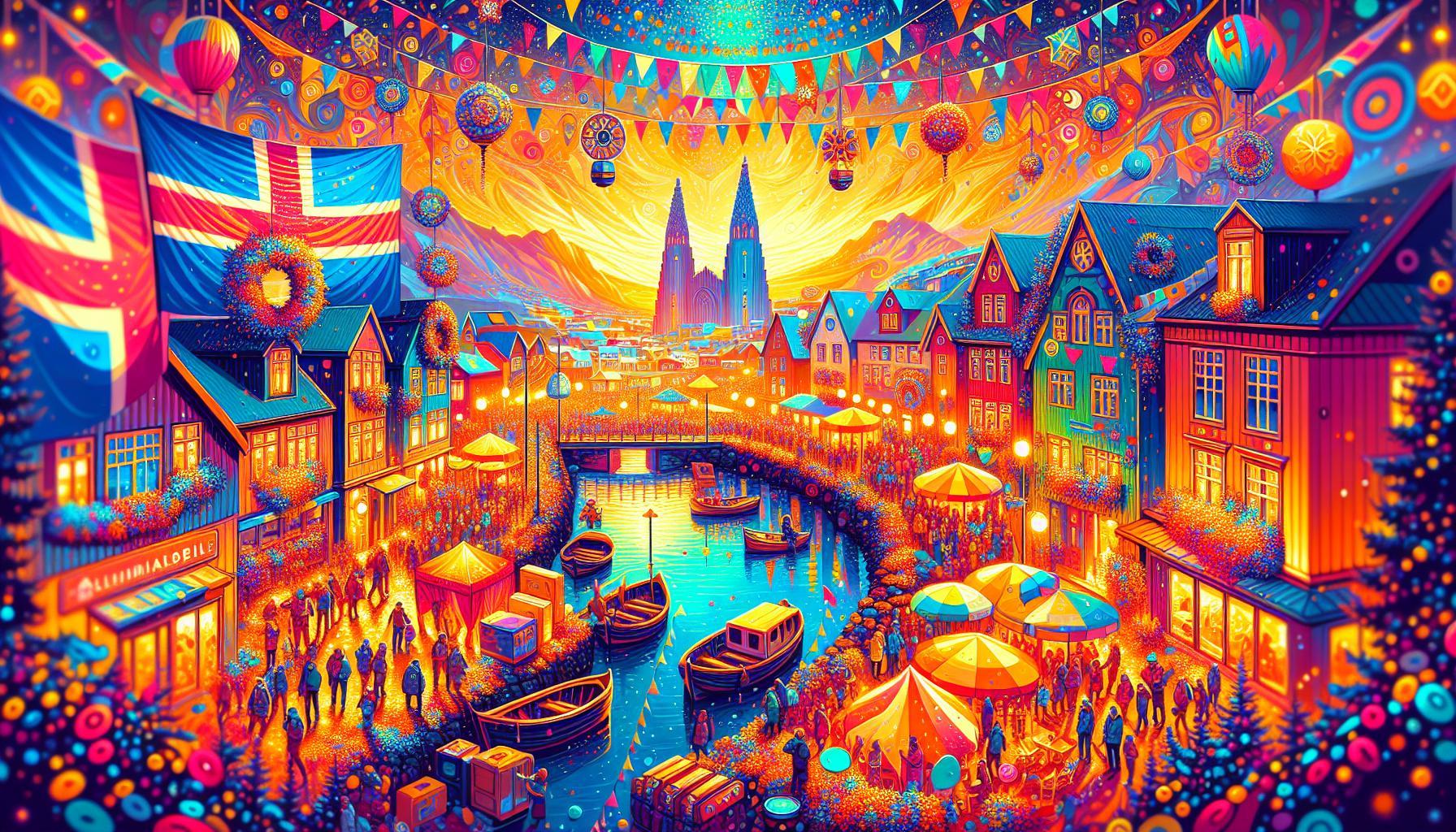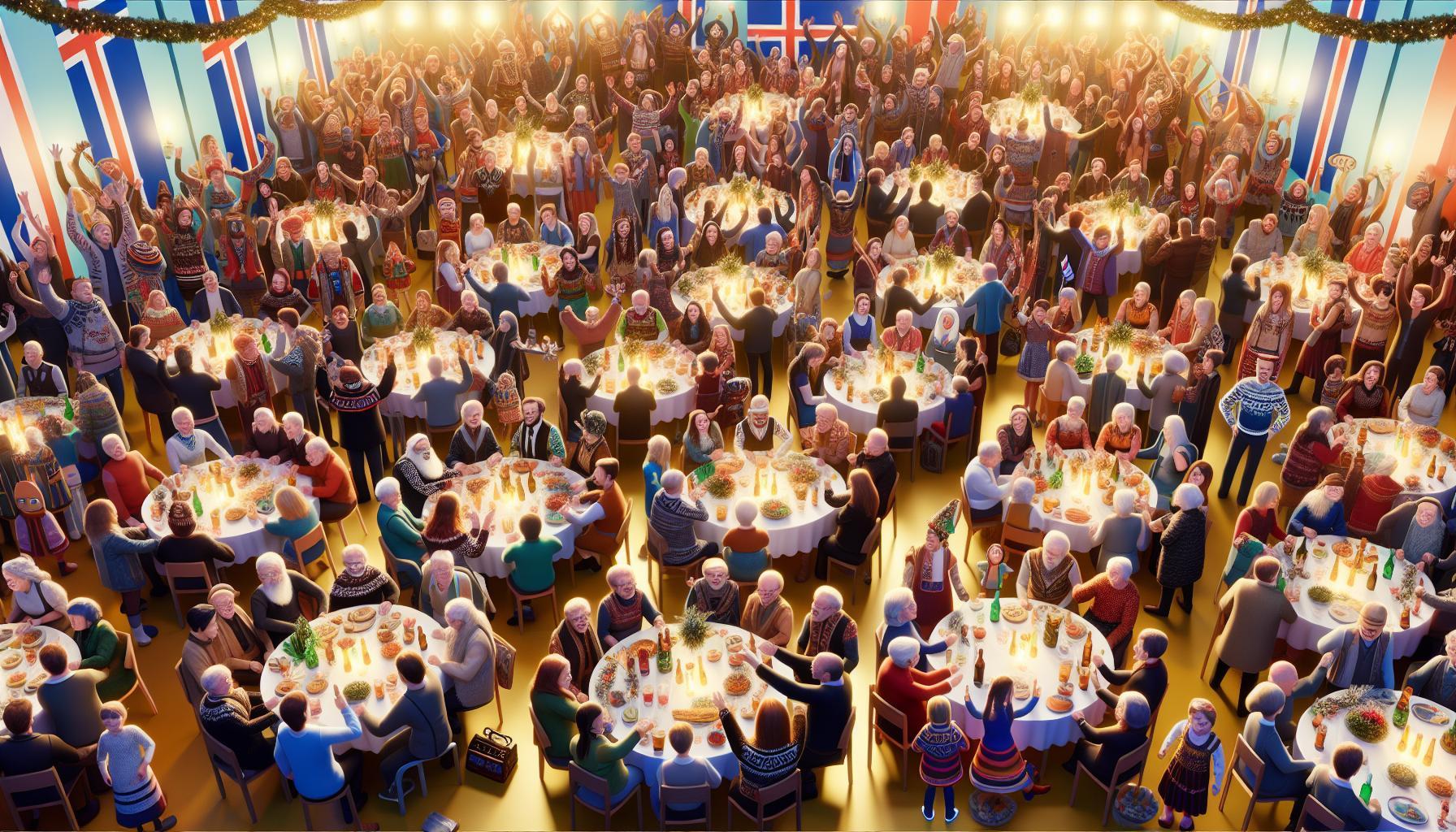As Iceland’s landscape evolves, so does its demographic makeup, raising important questions about diversity within this unique island nation. Understanding the presence and experiences of Black individuals in Iceland is not only crucial for fostering inclusivity but also illuminates the broader narrative of globalization in remote communities. Currently, the number of Black residents remains relatively small, reflecting Iceland’s rich cultural tapestry and ongoing dialogue about race and identity.
The Changing Landscape: Understanding Iceland’s Black Population
As global migration patterns evolve, many countries are experiencing shifts in their population demographics, and Iceland is no exception. The emergence of a vibrant Black community adds rich cultural diversity to this predominantly homogenous nation. Exploring the dynamics of how many Black people reside in Iceland reveals not only statistical insights but also a narrative of resilience, adaptation, and community integration.
Demographics of Black Residents
While Iceland is widely known for its volcanic landscapes and striking natural features, it is also gradually becoming a mosaic of cultures. As of the most recent data, estimates suggest that the Black population in the country is around 2% of the total population. This might seem minor; however, it represents an important shift in the nation’s demographic profile. The growth can be attributed mainly to increased immigration from various countries in recent years, particularly from the Caribbean, Africa, and the United States.
| Country of Origin | Estimated Population |
|---|---|
| Somalia | Approx. 1,200 |
| Jamaica | Approx. 600 |
| Cape Verde | Approx. 500 |
| United States | Approx. 400 |
Cultural Contributions and Challenges
The contributions of Black residents to Icelandic society are significant. Community members contribute to diverse areas such as art, music, education, and cuisine. For instance, cultural events celebrating African heritage are regularly organized, showcasing music, dance, and food, which have become increasingly popular among both locals and tourists. These events create an opportunity for dialogue, understanding, and celebration of diversity.
However, the journey is not without its challenges. Many Black individuals in Iceland face issues related to integration and representation in public life. Discrimination and social isolation can create barriers, making it essential for both the government and civil society to work towards fostering a more inclusive environment. Practical steps include increasing awareness campaigns, encouraging cultural exchanges, and offering support mechanisms for newcomers to ensure they feel welcomed and valued in their new home.
As the demographic landscape of Iceland continues to evolve, understanding the nuances of the Black population is key to promoting unity and a shared identity in a nation that values equality and community.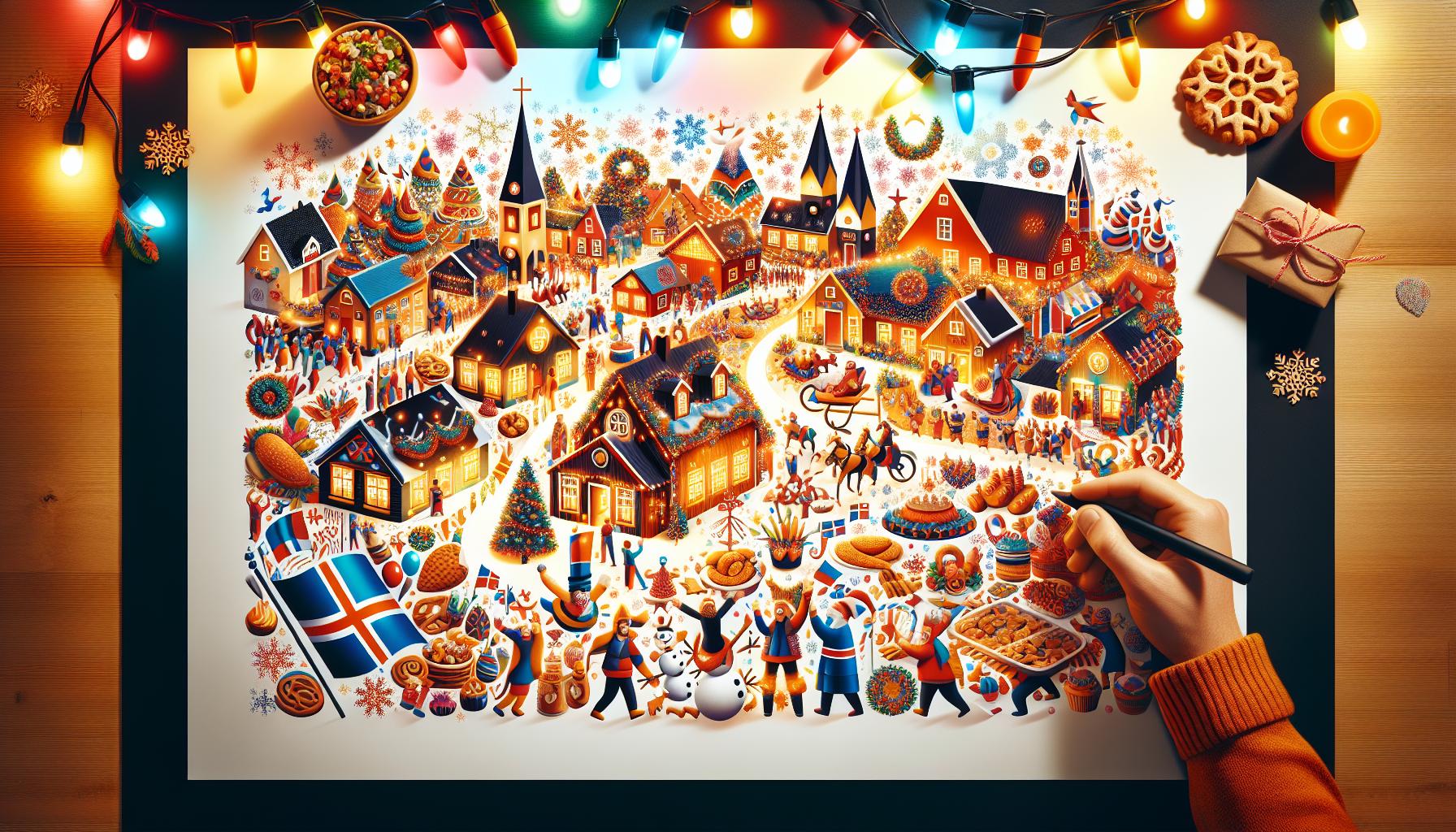
A Journey Through Iceland’s History and Its Diverse Communities
In the midst of its stunning landscapes, Iceland’s history is woven with tales of exploration, conquest, and community development that showcase the island’s rich and varied cultural tapestry. While the early settlers of Iceland were predominantly Norse and Celtic, the diversity of the island’s population began to evolve significantly over the centuries, leading to the Iceland we know today. The Viking settlers who arrived in the late 9th century not only brought their customs and traditions but also set the stage for the island’s complex social fabric that has continued to evolve, especially in recent years as globalization influences Iceland’s demographics.
Colonial and Historical Influences
The early settlement period laid the groundwork for Iceland’s unique cultural identity, which was later enriched through various historical influences. The city’s capital, Reykjavík, became a melting pot as it developed into a center for trade and governance. In addition to the Norse and Celtic roots, Iceland has seen waves of visitors and immigrants from different regions of the world, which have contributed to its demographic changes. The dependence on fishing and trade has historically attracted foreign labor, particularly from other Nordic countries, and more recently from Africa, Asia, and Eastern Europe, making the population more diverse.
Modern Demographics and Community
In contemporary times, the question of “How many Black people are in Iceland?” offers a glimpse into the ongoing narrative of diversity in this Northern island. As of recent estimates, the percentage of the Black population within Iceland is about 1% of the total population, which may seem small but represents a growing community that continues to participate actively in Icelandic society. The urban centers, particularly Reykjavík, display a richer demographic mix than would be expected from the wider national context, reflecting Iceland’s commitment to inclusivity and collaboration among different cultures.
- Immigrant population includes representatives from various African countries.
- Community initiatives aimed at fostering integration of diverse cultures.
- Increased visibility and contributions of Black Icelanders in various sectors.
To further illustrate Iceland’s evolving demographic landscape, consider the following table that summarizes some key aspects of current diversity trends.
| Aspect | Details |
|---|---|
| Population Percentage | Approx. 1% Black residents |
| Largest Cities | Reykjavík, Akureyri |
| Key Communities | Various immigrant groups from Africa, Asia, and Eastern Europe |
As Iceland continues to embrace its multicultural identity, it is essential to recognize the contributions of all communities, including Black Icelanders, who enrich the nation’s cultural and social landscapes. Through awareness and active participation, the story of Iceland’s diverse communities unfolds, showcasing a society that acknowledges its past while looking towards an inclusive future.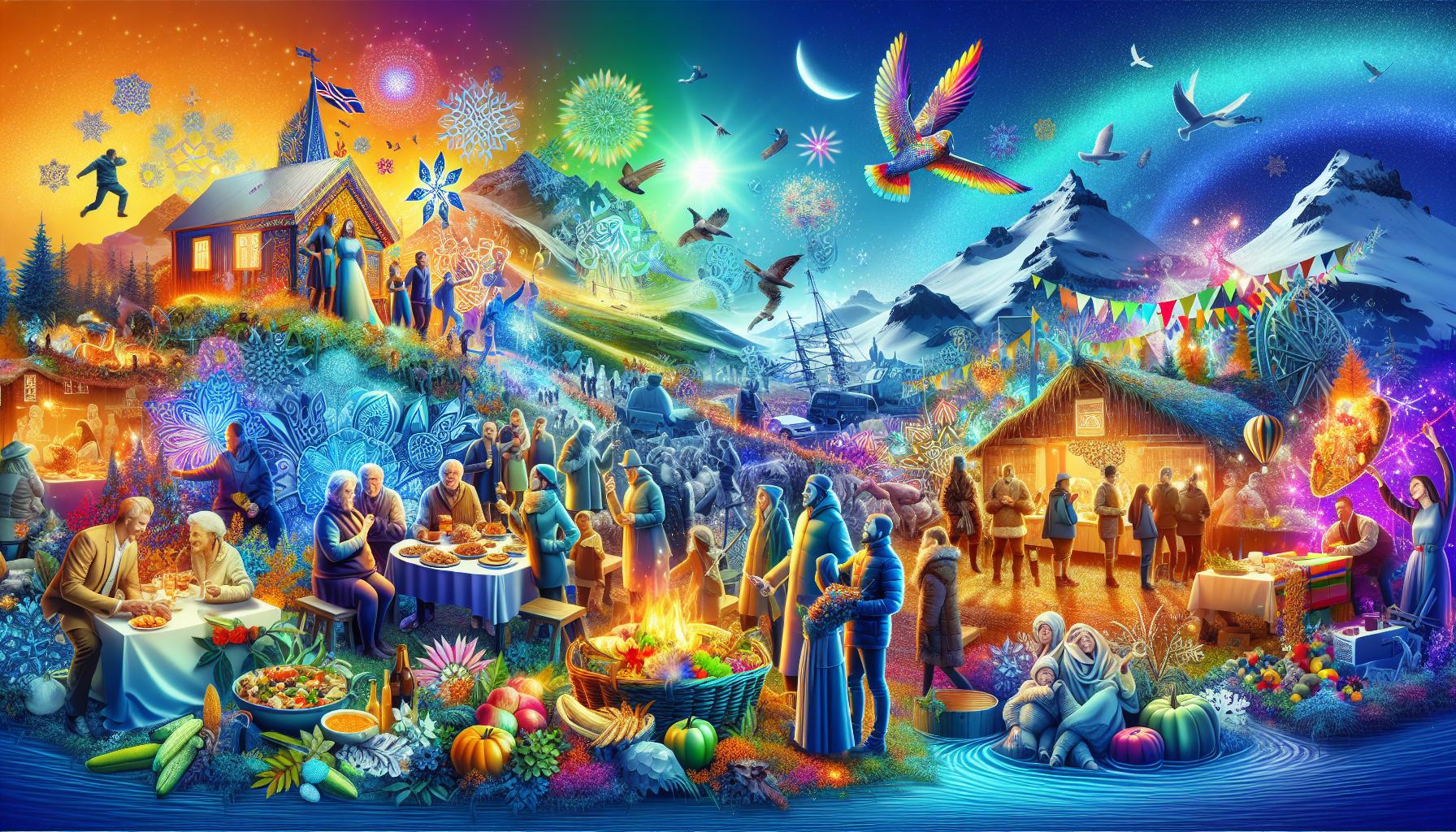
Cultural Contributions: Celebrating Black Influence in Iceland
Iceland, known for its stunning landscapes and rich Viking history, may not immediately be recognized for its diverse cultural contributions, particularly from the Black community. However, as the demographics evolve, so too does the influence of individuals from diverse backgrounds in shaping Icelandic society. The growing presence of Black individuals and communities is proving to be a vibrant thread in the fabric of Icelandic culture, contributing to art, music, food, and social initiatives that celebrate diversity and inclusion.
Artistic Expression and Music
One of the most powerful ways in which the Black community has influenced Iceland’s cultural landscape is through art and music. In recent years, several Black artists have emerged, showcasing their talents in different mediums—from painting to performing arts. For instance, artists like Svavar Knútur and Ella G. Smith have brought their unique perspectives and experiences to Iceland’s artistic community, enriching it with their narratives.
Music is another arena where these influences are palpable. Genres such as hip-hop and soul are gaining ground in Iceland, thanks in part to Black musicians who are sharing their culture and stories through their work. Festivals like Pride and Reykjavik Culture Night have increasingly featured performances by Black artists, which helps in amplifying their voices and celebrating their contributions within the broader Icelandic culture.
Culinary Diversity
The impact of the Black community extends into the culinary scene as well. Traditional Icelandic cuisine has started to incorporate flavors and techniques from the African diaspora. Food festivals throughout the country have showcased dishes that blend Icelandic ingredients with Caribbean spices, African recipes, and modern interpretations that reflect the rich culinary legacies of Black cultures. This culinary fusion not only tantalizes the taste buds but also educates the population about the diverse heritage that exists within Iceland’s borders.
Social Initiatives and Community Building
In recent years, various organizations led by Black Icelanders have been pivotal in promoting dialogue around race and inclusion. These initiatives often aim to address issues of representation and advocate for the rights of minorities within Iceland. Events such as workshops, discussions, and cultural exhibitions have garnered attention and participation from citizens aspiring to understand and engage with the realities of diversity in their community.
Additionally, organizations like Samtökin ’78 and the Reykjavik City Council continue to work towards fostering an inclusive environment, where all voices are heard, and cultural contributions are celebrated. These efforts not only highlight the importance of representation but also strengthen community ties among diverse groups, paving the way for a more inclusive future.
The ongoing cultural contributions of Black individuals in Iceland are creating a vibrant tapestry of diversity. As the demographics continue to evolve, the dialogue around these influences becomes more crucial to understanding Iceland’s modern identity. Identifying and appreciating these contributions can lead to a richer, more inclusive society where everyone feels valued.
Mapping Diversity: Where to Find the Black Community in Iceland
The landscape of Iceland, often perceived as homogenous, is gradually becoming more diverse, with a growing presence of the Black community enriching its cultural fabric. While Iceland is renowned for its stunning natural beauty and unique geography, the demographics are slowly evolving, presenting a new layer to the conversation about identity, culture, and community within this island nation. Understanding where to find and engage with the Black community in Iceland offers insight into a vibrant segment of society that contributes to the nation’s diversity.
Community Hotspots
Iceland’s capital, Reykjavik, is at the heart of this growing community. Here are some notable locales and events where the Black community participates actively:
- Reykjavik Art Museum: Frequently hosts exhibitions that celebrate cultural diversity and often features works from artists of African descent.
- Sólon Bistro: A popular gathering spot where locals and immigrants share experiences and cultural insights over food and drinks.
- Cultural Festivals: Events like the Reykjavik Culture Night and the Reykjavik International Film Festival often include performances and films by Black artists, showcasing their stories and contributions.
- Dance Schools: Institutions such as the Icelandic Dance Company embrace diverse dance forms, often incorporating styles from Africa and the diaspora.
Connecting Through Organizations
Several organizations in Iceland aim to foster support and community for Black individuals and people of color. Engaging with these groups can help newcomers and residents find a sense of belonging:
- Black in Iceland: A grassroots organization that promotes visibility, empowerment, and community ties among Black Icelanders and supporters.
- Women of Color in Iceland: An initiative focused on the experiences of women of color, providing a platform for dialogue, collaboration, and networking.
- Multicultural Center: A hub that offers various services, resources, and events aimed at fostering multicultural awareness and supporting immigrants.
Educational and Cultural Engagement
Learning about the diverse backgrounds of the Black community in Iceland can broaden perspectives and challenge stereotypes. Educational institutions and libraries often host talks and workshops that explore themes of racial identity and cultural heritage. Engaging with literary works, films, or documentaries focused on the experiences of Black individuals can further enrich understanding and foster inclusivity.
| Event/Organization | Focus | Website |
|---|---|---|
| Black in Iceland | Community empowerment | blackiniceland.com |
| Women of Color in Iceland | Women’s rights and support | womenofcolor.is |
| Multicultural Center | Support for immigrants | multiculturalcenter.is |
In summary, while explorations into the demographics detailed in “How Many Black People in Iceland: Demographics & Diversity Facts” indicate a minority presence, the potential for community building and cultural sharing is vibrant and promising. By navigating these spaces and engaging with local organizations, individuals can foster connections and contribute to the continuing narrative of diversity in Iceland.
Voices of Iceland: Personal Stories from the Black Experience
From the stunning landscapes to the unique culture, Iceland is often portrayed as a land of contrasts, but the rich voices of its Black residents add depth to its narrative. Though the population of Black people in Iceland is small, the personal stories and experiences contribute to a compelling tapestry of diversity on the island. Let’s delve into the experiences of those who navigate life as part of Iceland’s minority, shedding light on how they connect with both their heritage and their Icelandic surroundings.
Personal Narratives That Shape Identity
Every individual’s story reflects a journey of identity, resilience, and cultural pride. Many Black Icelanders talk about the duality they experience in their daily lives—embracing both their African roots and Icelandic culture. For instance, a young artist from Reykjavik shares how her mixed heritage has influenced her creativity. She uses traditional Icelandic motifs and combines them with African aesthetics in her art, creating a rich dialogue that celebrates both cultures. This blending not only enriches her identity but also resonates with diverse audiences eager to experience new forms of expression.
- Connecting Through Art: Many Black artists in Iceland have found solace and expression in their art, creating a platform for discussions about race and culture.
- Community Engagement: With the rise of cultural festivals, members from the Black community often collaborate, fostering a sense of belonging and mutual support.
- Education and Awareness: Some Icelandic schools are beginning to incorporate more inclusive practices that highlight the contributions of Black history and culture, a positive step towards diversity.
The Role of Community and Support
Creating supportive networks is paramount. Many Black residents find solidarity in community groups designed to uplift minority voices. These organizations often host events that celebrate African heritage, such as traditional dance workshops or storytelling nights, which promote cultural exchange and understanding among Icelanders of all backgrounds. By engaging with their culture, these events not only help preserve traditions but also foster friendships, bridging connections across diverse identities.
To illustrate the landscape of Black experiences in Iceland, it’s essential to recognize how these stories challenge misconceptions about demographics and diversity. The narrative around how many Black people live in Iceland is more than just statistics; it’s about the lives, voices, and contributions that define the community.
| Key Areas of Influence | Impact on Community |
|---|---|
| Art and Culture | Promotes visibility and fosters appreciation for diversity |
| Education | Encourages discussions about history and identity in classrooms |
| Social Networking | Strengthens ties within the community and increases support |
Through these communal efforts and personal experiences, the multifaceted identity of Black Icelanders continues to evolve, revealing stories of connection, identity, and resilience that are essential to understanding the broader narrative of Iceland’s diverse landscape.
Education and Awareness: Promoting Diversity in Icelandic Society
Iceland, renowned for its stunning landscapes and rich cultural heritage, is also gradually becoming more aware of the importance of diversity within its society. Historically, the population has been predominantly homogenous, but recent demographic shifts indicate a growing recognition of multiculturalism. As discussions about inclusion and diversity become more pronounced, education and awareness play crucial roles in shaping a more inclusive Icelandic society.
Integrating Diversity into Education
One of the most effective ways to promote understanding and appreciation of diversity is through the education system. Schools in Iceland can implement comprehensive programs aimed at educating students about different cultures, including those of Black communities and other minority groups. Such initiatives could involve:
- Adding multicultural literature to the curriculum to provide students with diverse perspectives.
- Hosting workshops and discussions that focus on the experiences of immigrants and minorities in Iceland.
- Creating exchange programs with schools in other countries to foster global awareness and empathy.
By weaving inclusive narratives into the educational fabric, Iceland can equip the next generation with the knowledge and sensitivity needed to navigate a diverse world.
Community Engagement and Events
Beyond formal education, fostering community engagement through events and initiatives can significantly enhance diversity awareness. Local organizations and institutions can take the lead in sponsoring:
- Cultural festivals that celebrate the traditions, food, and art of various ethnic communities.
- Panel discussions and seminars featuring speakers from diverse backgrounds to share their experiences.
- Collaborative projects between different cultural groups, aimed at promoting unity and understanding.
Creating spaces where diverse voices are heard can encourage Icelanders to learn from one another while dismantling stereotypes and prejudices.
Showcasing Data for Understanding
A critical aspect of promoting diversity is accurately representing demographic data to highlight the growing presence of minority groups, including Black individuals in Iceland. Presenting this information helps to spark conversations that can lead to greater societal change. A basic representation of diversity could look like this:
| Ethnic Group | Population Estimate | Percentage of Total Population |
|---|---|---|
| White | 360,000 | 93% |
| Asian | 7,500 | 2% |
| Black | 5,000 | 1.3% |
| Other | 10,000 | 2.7% |
Communicating such figures not only fosters awareness but also encourages ongoing discussions about the importance of embracing diversity in Iceland. It is essential for government bodies, educational institutions, and community leaders to collaborate in efforts that promote inclusion, ensuring that every voice is recognized and valued, thereby enriching the cultural mosaic of Icelandic society.
A Warm Welcome: Navigating Life as a Black Individual in Iceland
Iceland is often celebrated for its breathtaking landscapes and vibrant culture, but it also carries a lesser-known narrative about the experiences of Black individuals living in this Nordic paradise. As of the latest demographics, the Black population in Iceland remains relatively small, leading to unique challenges and triumphs for those who call this country home. Understanding the social fabric woven from the threads of diversity requires diving deeper into the everyday experiences of Black Icelanders.
Building Community Connections
For Black individuals new to Iceland, forging connections can be both an enlightening and daunting experience. With a minority population that comprises less than 2% of the total demographic, many may find themselves navigating a largely homogeneous society. However, community-building initiatives and social groups can serve as vital resources. Local organizations and online forums provide support and camaraderie, ultimately helping to foster a sense of belonging. Here are some avenues to explore:
- Cultural Organizations: Joining local Afro-Icelandic groups can provide insights into shared cultural experiences and heritage.
- Social Media Communities: Engaging with platforms dedicated to the Black community in Iceland can help newcomers discover events and social gatherings.
- Support Networks: Many churches and community centers welcome diversity, allowing individuals to find fellowship and mutual support.
Celebrating Diversity through Education and Awareness
Education plays a crucial role in navigating life as a Black individual in Iceland. A proactive approach toward educating the broader population can alleviate misconceptions and foster a more inclusive environment. Participating in workshops or cultural exchange programs allows for the sharing of stories and traditions and helps dismantle stereotypes. Here are some effective ways to promote understanding:
- Hosting Events: Organizing cultural festivals or educational seminars can highlight the richness of Black culture and history.
- Engaging Schools: Working with schools to include diverse narratives in their curriculum can help shape the next generation’s perception.
- Art and Expression: Utilizing art, music, and performance as mediums for storytelling helps showcase the vibrancy of Black life in Iceland.
Creating awareness about the number of Black individuals in a predominantly white country like Iceland involves weaving personal narratives into the larger societal story. By doing so, it becomes possible to bridge gaps, cultivate understanding, and foster a welcoming atmosphere for all. Each interaction, whether it be through community engagement or educational initiatives, strengthens the fabric of Iceland’s rich, diverse culture.
Exploring Local Events and Festivals Celebrating Diversity
Exploring vibrant local events and festivals is a wonderful way to celebrate the rich tapestry of diversity found in communities around the world, including insights drawn from the demographics of Black people in Iceland. The blending of cultures at such events not only promotes understanding but also showcases the unique contributions of different backgrounds to the social fabric. Festivals that celebrate diversity often feature a variety of activities, performances, and culinary experiences that reflect the heritage of various groups.
Throughout the year, numerous events highlight indigenous cultures, immigrant communities, and the contributions of people of African descent, including those residing in Iceland. These festivals typically include:
- Music and Dance Performances: You can enjoy genres ranging from reggae to traditional African drumming and dance, offering a glimpse into the rhythmic heritage of diverse cultures.
- Cultural Workshops: Many events host workshops that allow attendees to engage in traditional crafts, cooking, and storytelling, enriching their understanding of cultural practices.
- Food Festivals: Culinary events are a fantastic way to explore the flavors of different cultures. Dishes from various regions highlight how global cuisine can enrich local dining experiences.
Upcoming Events and Activities
Communities often pride themselves on hosting celebrations that honor their multicultural aspects. For those interested in participating, platforms like Eventbrite (Eventbrite) provide listings of local events where you can discover festivals that celebrate diversity. Moreover, checking out city-specific calendars can reveal unique opportunities, from parades to local heritage days.
Here’s a quick overview of what you can typically expect in these events:
| Event Type | Typical Activities | Benefits |
|---|---|---|
| Cultural Festivals | Live performances, food stalls, workshops | Increased awareness and appreciation of diverse cultures |
| Art Exhibitions | Showcasing artwork from diverse artists | Highlighting minority voices in the art community |
| Historical Celebrations | Lectures, guided tours, reenactments | Preservation of cultural heritage |
Attending these events not only aids in personal growth and understanding but also supports local communities and their initiatives towards inclusivity. As countries like Iceland embrace their diversity more openly, recognizing the nuances within their demographic landscapes, community events become powerful tools for fostering relationships and mutual respect among all cultures.
Government Initiatives: Support for Inclusivity in Iceland
In recent years, the commitment of Icelandic authorities to fostering an inclusive society has become increasingly apparent. As small but significant changes ripple through the fabric of Icelandic social policy, efforts are underway to enhance support for communities, particularly among minority groups. With a growing awareness of the diverse makeup of the nation, including discussions related to questions like ‘How Many Black People in Iceland: Demographics & Diversity Facts,’ government initiatives are evolving to prioritize inclusivity, cultural exchange, and equal opportunities.
Strategic Frameworks for Diversity
The Icelandic government has rolled out various strategic frameworks aimed at promoting diversity and addressing disparities. This includes initiatives focused on anti-discrimination, elevating the representation of minorities in various sectors, and fostering community engagement. For example, the Equality Act, which emphasizes the importance of equal rights irrespective of race and ethnicity, serves as a legal foundation for various policies aimed at enhancing social cohesion.
Some of the specific government initiatives include:
- The Icelandic Human Rights Centre: This body works to ensure that human rights are upheld and that minority voices are amplified across society.
- Migrant Counseling Services: Offering resources and support for newcomers from diverse backgrounds, these services focus on integration and community building.
- Education Programs: Schools are encouraged to include multicultural education in their curricula, promoting understanding and respect among students from different backgrounds.
Community and Cultural Programs
In addition to legal frameworks, the government supports community-driven initiatives that celebrate diversity and foster inclusivity. Events such as the Reykjavik Pride Festival and various multicultural festivals showcase Iceland’s commitment to embracing different cultures, allowing underrepresented groups to share their heritage and experiences. These gatherings not only provide a platform for cultural expression but also enhance community ties and awareness among Icelanders.
Moreover, partnerships with organizations such as the Immigrant Council of Iceland reflect a collaborative effort to provide resources that empower minority groups. This includes workshops, mentorship programs, and scholarships aimed at ensuring that individuals from diverse racial and ethnic backgrounds have equal access to education and employment opportunities.
Future Directions
Looking ahead, Iceland’s government recognizes that the journey towards a fully inclusive society is ongoing. With a keen eye on diversity statistics, including inquiries related to ‘How Many Black People in Iceland: Demographics & Diversity Facts,’ policymakers are engaging in dialogue with community leaders to better understand the needs of various groups. By gathering data and translating it into actionable policies, the aims include not only supporting current residents but also creating an inviting environment for newcomers.
As these initiatives continue to evolve, they highlight the recognition that diversity enriches Icelandic society. By fostering an inclusive environment where every individual can thrive, Iceland sets an example for other nations, demonstrating that inclusivity is not just a policy but a shared cultural value that benefits everyone.
Frequently Asked Questions
How Many Black People Live in Iceland?
As of recent estimates, there are approximately 1,400 Black people living in Iceland, making up about 0.4% of the population. This number reflects the country’s multicultural landscape, although it still remains predominantly homogeneous.
While Iceland is known for its stunning landscapes and friendly locals, it’s important to understand its demographics and diversity context. The Black population includes immigrants from various countries, contributing to a rich tapestry of cultures. Efforts to enhance diversity are ongoing, making Iceland an increasingly welcoming place for all.
What Is the Culture Like for Black People in Iceland?
Black people in Iceland experience a unique cultural environment that is both challenging and enriching. The local community is generally friendly and welcoming, but there can be moments of cultural isolation.
Many Black residents find connections through cultural events and local organizations. Celebrating diversity during festivals and workshops helps foster understanding and appreciation among different groups. Additionally, there are efforts to increase representation in the arts and education sectors, which benefits the broader community.
Why Does Diversity Matter in Iceland?
Diversity matters in Iceland as it enriches the social fabric and promotes cultural exchange, fostering a more inclusive society for everyone.
As Icelandic society continues to grapple with its identity, embracing diversity through education and community initiatives helps combat stereotypes and discrimination. An inclusive culture not only benefits the immigrant population but also enhances the overall quality of life for all Icelanders.
Can I Find Supportive Communities for Black People in Iceland?
Yes, supportive communities for Black people do exist in Iceland. Organizations like Félag svart fólk (The Black Association) actively work to create support networks and foster community engagement.
These groups often host events, workshops, and discussions that aim to connect individuals, share experiences, and raise awareness. Being part of such networks can greatly enhance your experience, making it easier to navigate daily life and find camaraderie in a welcoming space.
How Is the Education System Addressing Diversity in Iceland?
The education system in Iceland is gradually incorporating diversity into its curriculum, emphasizing cultural understanding and inclusivity among students.
Schools are encouraged to integrate multicultural education that addresses the backgrounds of all students. This approach not only helps minority students feel valued and understood but also prepares all children for a globalized world where diversity is a norm rather than an exception.
What Challenges Do Black People Face in Iceland?
Black individuals in Iceland may encounter issues such as cultural insensitivity, integration challenges, and occasional discrimination.
While many embrace the local culture, navigating a predominantly homogenous society can be daunting. However, efforts to address these challenges are being made through community-led initiatives and increased awareness campaigns, helping to foster a more inclusive environment.
How Does the Government Support Diversity in Iceland?
The Icelandic government supports diversity through various policies aimed at promoting equality and human rights for all citizens, including minority groups.
Through programs that advocate for minority rights, the government aims to create a society where everyone feels included and valued. This commitment can be seen in the enactment of laws protecting against discrimination and promoting equal opportunities in employment and education.
Final Thoughts
As you wrap up your exploration of the demographics and diversity facts surrounding Black communities in Iceland, remember that this unique island nation, while predominantly homogenous, is rich with stories and cultural intersections that reflect global influences. From the vibrant art scene in Reykjavik that celebrates a mosaic of cultures to the warmth of communities welcoming newcomers, Iceland offers an inviting atmosphere for those looking to explore or settle.
Engage with local voices, whether through interviews or community events, to gain insight into personal experiences that showcase the tapestry of life here. Imagine strolling through the lively streets vibrantly adorned for culture festivals, where laughter and music flow freely, creating a sense of belonging for all. As you consider the opportunity to visit or move to Iceland, let your curiosity guide you. Plan your journey with the confidence that this land of fire and ice not only boasts stunning landscapes but also a growing tapestry of diverse narratives waiting to be discovered.
So, pack your bags, embrace the adventure, and prepare to make memories in a place that is as welcoming as it is extraordinary. Your Icelandic journey promises to be as profound as it is picturesque, offering rich interactions and an invitation to become part of its ongoing story.

